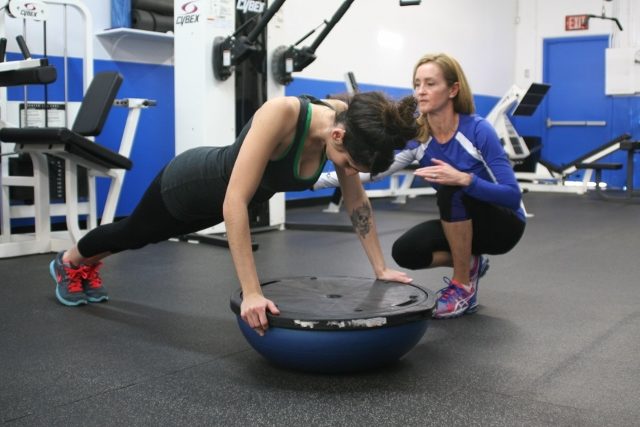Proper Biomechanics for Chest Exercises
I have run into many clients over the years that have had chronic shoulder problems and after correcting their mechanics their issues went away. From bench press to push ups, if you follow a few simple mechanical tips, you can maximize the safety and effectiveness of all chest exercises. Let’s first address body position. The natural curve of your spine should never be compromised during any chest exercise. This means that you should keep all the natural curves in your spine that you have when standing with correct posture. There should be a slight arch in the low back for example. You should not push it totally flat to the bench or over arch the lower back as both of those positions put extra stress on the spine. As for elbow position, during chest press your arm position should start with the resistance over your shoulders. As you go down you will direct your elbows to about a 65 degree position off your side at the bottom of the motion. This keeps pressure off the rotator cuff while allowing for full range of motion (touching bar to chest for example). By guiding your elbows to 65 degrees, you will notice a slight arch in your motion forward as you go down. Your pace during the motion should be around 3 seconds on the lowering phase and 2 seconds on the pushing/lifting phase. Never lock your elbows out at the top of the motion. If you are on an incline or decline, the same rules apply, your motion will just be angled differently. For flyes, the same rules apply but you will be doing the motion with a near straight arm. While doing push ups, the same rules apply but you are lifting your body weight instead of machine or free weights. You get the idea. All chest exercises have the same bio-mechanical rules. Make sure your chest exercises are done correctly because a nagging shoulder injury does nothing positive for your workout program.
Update 2/27/15
Over the last couple of years, I have noticed the importance of engaging the rear shoulder during chest exercises to keep the shoulder joint centered. The chest muscles have the tendency to pull the shoulder joint too far forward during chest presses, push ups and chest flys, potentially causing injury. This happens mostly because everything we do on a daily basis is in front of our body. Basically, the muscles to the back of our bodies turn off; causing the shoulders to pull forward instead of staying back and centered in good posture. The key to protecting your shoulder joint during forward pressing motions like chest press, is turning the muscles to the back of our body on, engaging the rear shoulder muscles to maintain center joint positioning. Pictured below, Christy corrects postural issues on a Bosu Ball push up with client Sarah. Here, Sarah’s shoulders are properly engaged back and center and Christy is adjusting her hip position. Next, Christy will have Sarah raise her head slightly as it is positioned too far down (too far ahead of her back and shoulders). Once you are in proper postural position, maintain it through the motion and you will achieve proper biomechanics for chest exercises.


